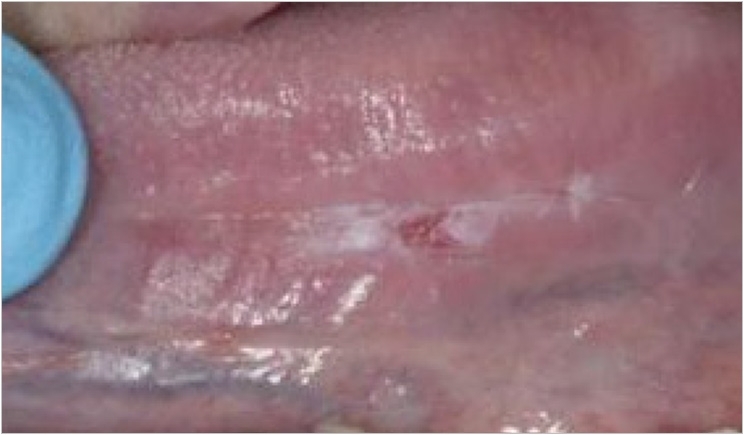
While doing my hospital dentistry residency at UCLA Medical Center, I was assigned a patient by the name of Mary who had been treated for squamous cell carcinoma of the tongue. As a part of her treatment, she had undergone radiation and chemotherapy, in addition to having a portion of her tongue and jaw resected. She had quite a frail appearance resulting from her lack of proper nutrition, loss of appetite, dry mouth, and difficulty chewing and swallowing. She had survived her disease, but she faced a long life of challenges.
As a token of her appreciation for her dental care, she baked me a cake. As I took a bite, the cake was flavorless and bland. It was then that I began to truly appreciate the challenges she experienced. She could no longer smell or taste the food that she prepared, so she was unable to experience the joy of a good meal. Sadly, this was an experience I had taken for granted for far too long.
My point in sharing this story is to show that we can make a difference in a person’s life as healthcare professionals. Early detection could have added to Mary’s quality of life and saved her from many of the ravages of cancer.
Oropharyngeal cancer is the eighth most common form of cancer, and 53,000 adults in the United States will be diagnosed with it in 2019. Also, an estimated 10,860 individuals will die from the disease. With a five-year overall survival rate of 65%, incidence is more than twice as high in men then in women.
The average age of diagnosis is 62. However, oropharyngeal cancer is being diagnosed in a younger and younger population due to its association with the human papillomavirus (HPV), which is suspected to be one of the leading causes of oropharyngeal cancer. HPV is projected to infect 12,000 people between the ages of 15 and 24 this year.
Oral cancer comes in various forms, and it often manifests no symptoms. Dental professionals are usually the first line of defense in the diagnosis and treatment of this potentially devastating and disfiguring disease. It is therefore our responsibility to:
- Know the signs and symptoms:These may include oral ulcers or sores that do not heal after two weeks; irregularities in the oral cavity such as red or white patches with an irregular surface, texture, or appearance; unusual lumps or swelling in the mouth, head, or neck area; unexplained or persistent pain in the mouth; difficulty chewing or swallowing; and persistent unexplained dry mouth or halitosis.
- Make oral cancer screening part of our routine oral exams:An oral cancer screening exam should be performed at each recall examination in all patients above the age of 14. While examining your patients, explain what you’re looking for and show them anything unusual you see.
- Discuss oral cancer risks with our patients and educate them about the importance of self-examination:Let them know that oral cancer can affect anybody, with most diagnoses most often linked to lifestyle factors. Smoking, alcohol, HPV, and genetics all play a role in increased susceptibility to oropharyngeal cancer. By involving our patients in the process, they become more aware of their oral health. The Oral Cancer Foundation has an informative website that teaches patients how to perform a self-exam and what to do if they find something concerning.
- Discuss preventive measures with your patients: Preventive measures include smoking and alcohol cessation therapies, HPV vaccinations for young people, regular recall exams, and good oral hygiene and home care practices.
- Establish an oral health protocol for patients undergoing radiation and chemotherapy for oropharyngeal cancer and other cancer types: As dental professional, we must know the effects of these therapies and how to effectively prevent or treat associated complications, such as xerostomia, dental caries, ulcerations of the mouth, bleeding gums, and secondary infections of the mouth.
- Stay informed on new developments:Read the latest oral cancer research or learn about new diagnostic tools that may help detect oral cancer in its earliest stages. The industry is innovating at a rapid pace!
- Get involved: As a member of the boards of directors of both Delta Dental of Arizona and its Foundation, I am proud to work with an organization that has a strong vested interest in our state’s oral health. Delta Dental of Arizona works year-round to have a positive impact on the oral health of communities across the state and will provide more than $1 million in support to 100 nonprofit organizations in 2019. Each year, we also participate in the Arizona Oral Cancer Awareness Walk, where we educate people about oral cancer risk factors and the oral care habits that can keep your mouth, gums, tongue, and teeth healthy.
Dr. Spigner has been on the Delta Dental of Arizona Board of Directors and Delta Dental of Arizona Foundation Board of Directors since 2016 and has been practicing dentistry since 1982. He has a private practice specializing in restorative, sedative, and special care dentistry. He is widely recognized for his expertise in hospital dentistry and served as founder and director of the Center for Dental Health at Good Samaritan Medical Center in Phoenix, Arizona. He is active in numerous dental organizations and is a member of the active medical staff at Banner University Medical Center Phoenix.
Related Articles
Biomarkers Distinguish Oral Cancer from Healthy Tissue
Know Your Leukoplakias to Identify Oral Cancer
Early Diagnosis of Oral Cancer Can Save Lives


